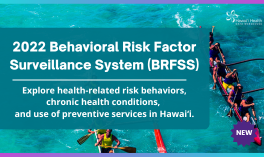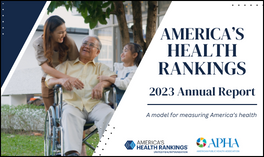Welcome To Hawaiʻi Health Data Warehouse
The Hawaiʻi Health Data Warehouse is dedicated to providing useful data to support public health professionals, researchers, the community and health agencies to become more effective in the application of health data. We store and organize health data from Hawaiʻi Department of Health’s (DOH) vital statistics system and health surveys and make the data available to users for analysis through this website powered by the Hawaiʻi-Indicator Based Information System (HI-IBIS). We combine DOH data with Hawaiʻi data from other sources such as the Census, national surveys, and reports and make them available through the Hawaiʻi Health Matters website.
As you explore our site, you’ll see links to embedded videos like this website overview video to help guide you. For additional help, use our Tools & Resources at the top of the page, or you can contact us at profiles@hhdw.org with questions. Happy data gathering!
News & Announcements
2022 Behavioral Risk Factor Surveillance System Data
The 2022 data from the Behavioral Risk Factor Surveillance System (BRFSS) have been released on HHDW.org and HawaiiHealthMatters.org. Explore data on health-related risk behaviors, chronic health conditions, use of preventive services, and more in Hawaiʻi. This year, explore 18 new indicators on HHDW.org in the…

Coffee Breaks
May 7, 2024 11:00 am
Learn how to the use the Topic Centers feature in HawaiiHealthMatters.org to access health indicators, promising practices, library resources, funding opportunities and more. Explore data by the broad areas of Health, Community, Economy, Education and Environmental Health or by more detailed subtopics within each of these.
America’s Health Rankings 2023 Annual Report
The 2023 Annual Report from America’s Health Rankings, released in collaboration with the American Public Health Association, is dedicated to informing and catalyzing actions that promote healthier communities across the United States. The overarching goal of the America’s Health Rankings Annual Report is to improve…




